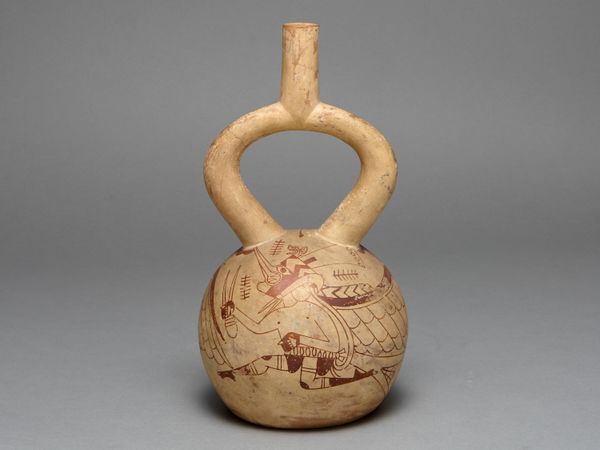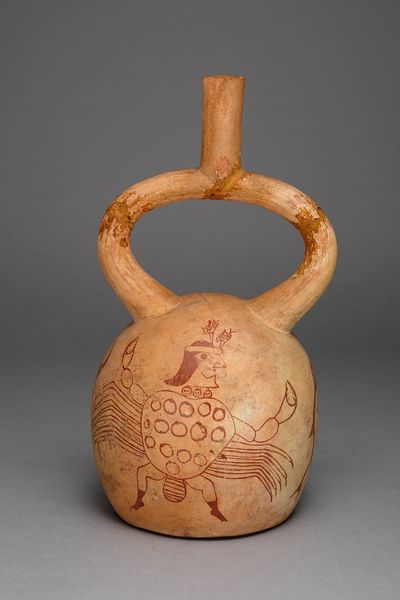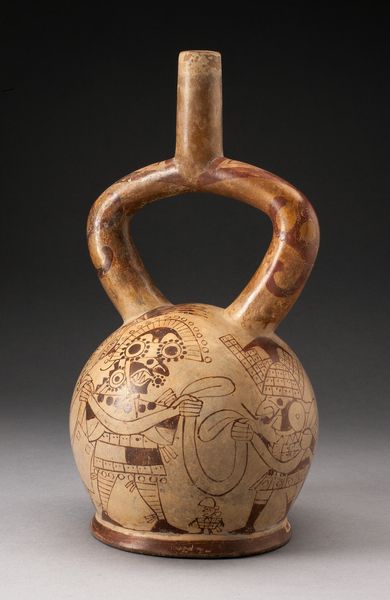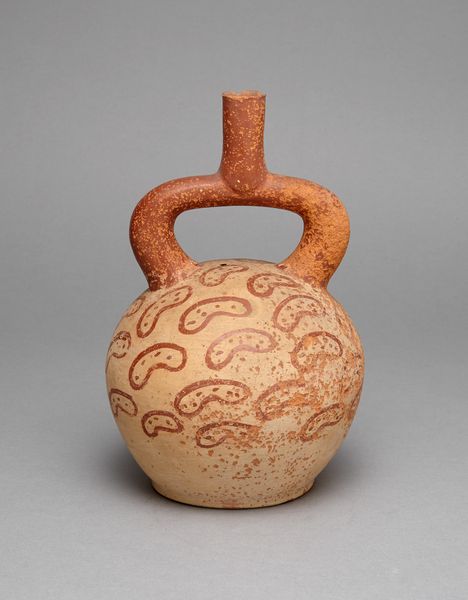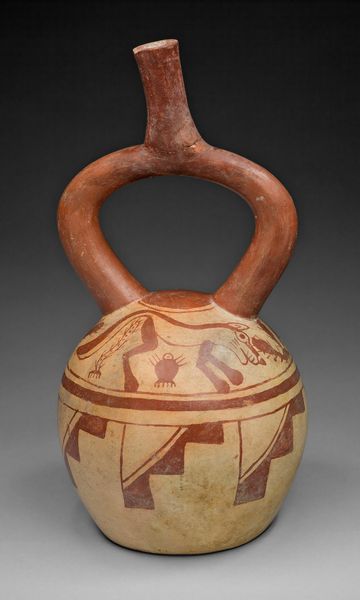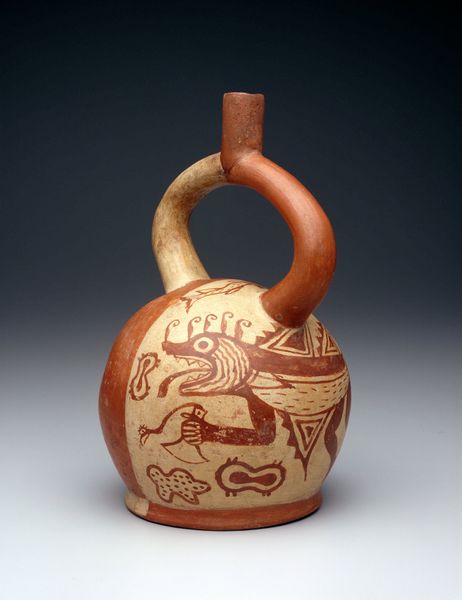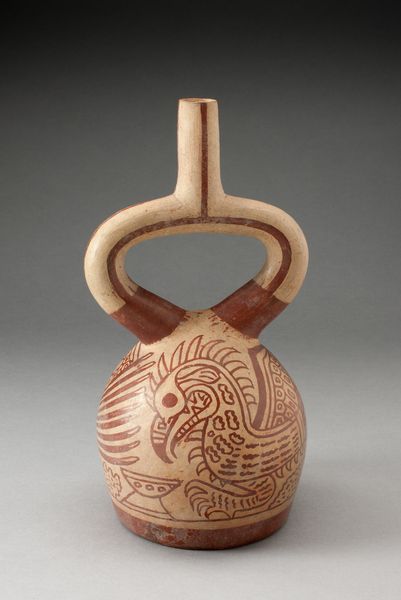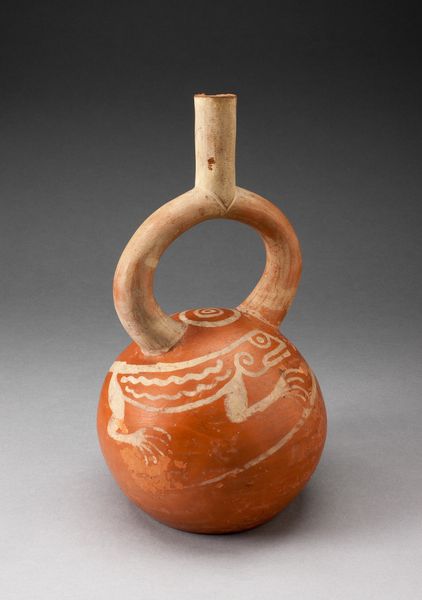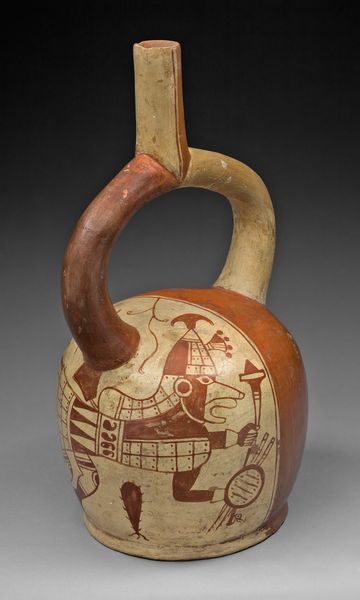
ceramic, terracotta
#
narrative-art
#
ceramic
#
terracotta
#
indigenous-americas
Dimensions: H. 29.7 cm (11 11/16 in.)
Copyright: Public Domain
Editor: Here we have the Moche "Stirrup Spout Vessel Depicting Runners," crafted from ceramic sometime between 100 and 500 AD. The scene etched onto it is very striking. There's a real sense of movement despite being static. How do you interpret this work? Curator: This piece speaks volumes about Moche society, particularly their rituals and social structures. Notice how the figures are rendered. They are participating in what seems like a ritual race. The Moche often used these vessels to depict scenes of warfare and elite competition, so these runners likely represent something more significant than just a sporting event. Editor: More significant, how so? Curator: Consider the stirrup spout itself. Its unique shape isn't just practical for pouring liquids; it’s also a powerful symbol. It appears in many important ceremonial contexts. Ask yourself, what emotional or cultural weight does repeated imagery like this hold for the Moche people? These races probably relate to power, endurance, or even sacrifice, connecting physical prowess to spiritual significance. Editor: So, it’s not just a decorative scene, it's laden with symbolism related to power and ritual. The repetition creates a cultural memory? Curator: Precisely. The repeated motif reinforces their cultural beliefs. How does it make you think about our own society and how we preserve our beliefs? Editor: That’s really interesting. I’ll definitely look at similar vessels in a new light now. Thanks! Curator: My pleasure! Always look beyond the surface and delve into the meanings that these symbols held, and continue to hold today.
Comments
No comments
Be the first to comment and join the conversation on the ultimate creative platform.
